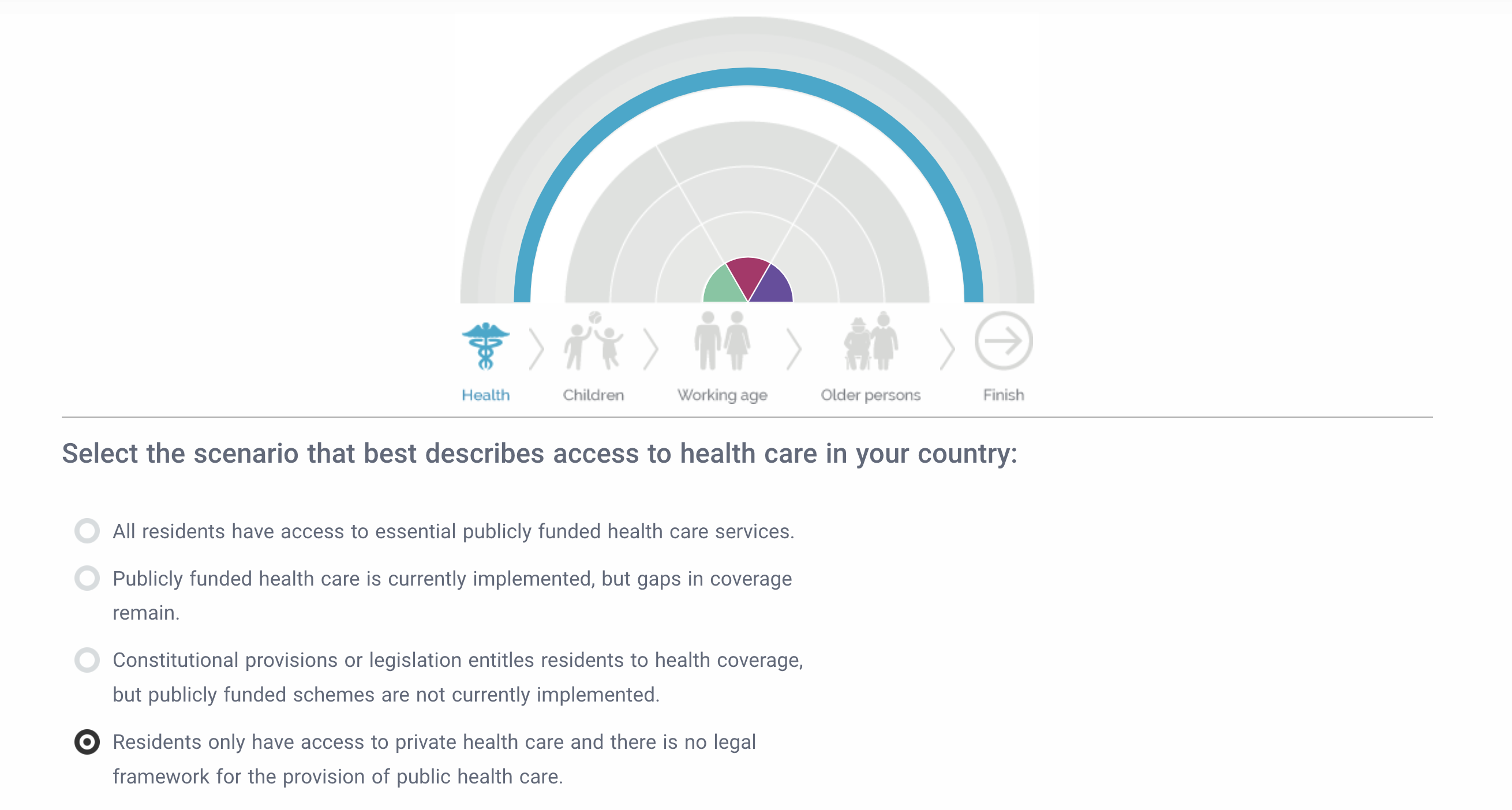SPOT
The Social Protection Online Toolbox (SPOT) provides tools to strengthen social protection systems in Asia and the Pacific
SPOT provides tools to help countries and stakeholders close gaps in social protection converage by:
-
Simulating how social protection boosts consumption and reduces
poverty
and inequality
-
Deepening skills on how to implement and manage social protection systems through five self-paced online trainings
-
Exploring the evidence on what works and what countries are doing
Explore how expanding coverage and benefits impacts lives and economies
Set your own benefit and coverage levels and obtain the impact these have on consumption, poverty and inequality, as well as their cost
Combine benefit schemes to see the total impact of customized packages
Compare different benefit schemes within one country, or across countries in Asia and the Pacific
Take one of our 5 online training courses and get a certificate.
- What are the core objectives of social protection and why is it critical for families and societies?
- What are the main barriers to achieving universal social protection?
- What are the key options to extend social protection and how do they work?
- Why are poverty-targeted measures an ineffective and unfair strategy?
- What should policymakers consider when designing and implementing a social protection system?
Learn how to explore a social protection system, get the evidence and see what countries are doing.
Social Protection empowers people to weather normal life events as well as larger shocks, such as an economic crisis or a pandemic. Accessing our policy resources will help you explore the evidence to justify this critical investment.
Social Protection Online Toolbox
The Social Protection Online Toolbox, SPOT, was developed by the United Nations Economic and Social Commission for Asia and the Pacific to support countries’ implementation of the Regional Action plan.
Why Social Protection?
Social protection is a human right enshrined in the Universal Declaration of Human Rights (UDHR) and the International Covenant on Economic, Social and Cultural Rights (ICESCR). Everyone has the right to an adequate standard of living guaranteed by social protection in times of need.
The ESCAP Action Plan to Strengthen Regional Cooperation on Social Protection defines social protection as “nationally defined policies and programmes that provide equitable access to all people and protect them throughout their lives against poverty and risks to their livelihood and well-being. This protection can be provided through a range of mechanisms, including cash or in-kind benefits, contributory or non-contributory schemes, and programmes to enhance human capital, productive assets and access to jobs.
It includes, but is not limited to, child benefits; benefits and support for people of working age in case of maternity, disability, work injury or unemployment; and old age pensions.”
Social protection provides critical income support to people throughout their lives. Different forms of child benefits, working-age benefits and old-age pensions help people raise a child and retire in dignity. They prevent old age, pregnancy, ill-health or unemployment leading to poverty and hardship.
In Asia and the Pacific, only a handful of countries have comprehensive social protection systems in place. In half of the countries in the region, excluding China, less than one third of the population is covered by a social protection scheme and the rest is completely unprotected.
Where the Region stands on coverage and expenditure levels
How comprehensive is social protection in your country?
your country, for children, working age and older age persons, as well as health.

Indonesia Launches CRISP Project to Build Climate-Resilient and Inclusive Communities
